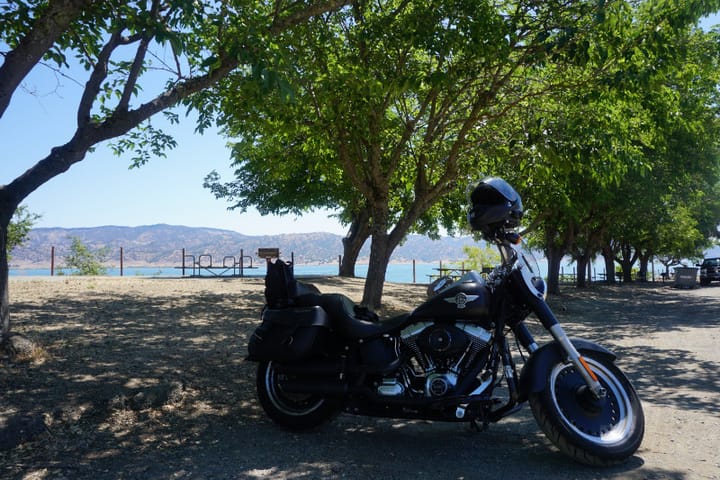Leading Sweep
There’s a concept in motorcycling, specifically on group rides, known as “the Sweep,” the last rider in the pack. This role offers a compelling metaphor in organizational leadership, especially when contrasted with the more visible Road Captain.

Yesterday, I decided to take the day off, dust off the motorcycle (which hasn’t been getting much love since shelter-in-place started), and go on a solo ride. For all the meditative benefits that solo activities can offer, I started reminiscing on some group rides I’ve taken over the years. In doing so, it was hard to not draw parallels between the way those groups of bikers worked together and team dynamics in the workplace.
On group rides, a couple of the key roles are the Road Captain (the rider taking the first position) and the Sweep (the last rider in the pack). While it’s obvious that the Road Captain carries a tremendous amount of responsibility, the Sweep has an equally important, and often unsung, role: ensuring that everyone makes it to the destination safely and together. Riding Sweep carries the expectation that this rider is willing and able to let others take the lead, can influence and improve the group through feedback, and is handy enough with a wrench if the situation requires it.
These same skills and attitudes apply to organizational leadership and team dynamics as well.
So, whether you are Riding Sweep or Leading Sweep, this post is for those out there looking to encourage leadership growth within their own group.
Letting Others Lead
Leadership, like any other skill, needs to be honed through time and practice. Whether on the road or in a company, being granted the opportunity to take the leading position amongst a group of peers can be an honor — but it can also be overwhelming. To enable other leaders to grow into this new responsibility, it is imperative to delegate this role and authority to others.
The most senior, experienced individual should not necessarily be captaining the group.
The most senior, experienced individual should exist in a support role: the Sweep.
On rides, the Road Captain and Sweep maintain a tight relationship based on mutual trust and a shared consciousness. This is no different in any other kind of team environment; the individual taking lead on a project and the person supporting them need to have full confidence in each other, lest the group suffer.
Lack of trust in either direction is problematic. For example, in a team setting, if the experienced “Sweep” does not trust the Captain’s decisions, this can lead to management anti-patterns such as micromanagement. Similarly, if the Captain does not trust that the Sweep has their back and supports their decisions, they may be prone to self-doubt and lack confidence in their own decisions.
Influence Through Feedback
A key advantage of playing this support role is in its vantage point; the Sweep is able to keep an eye on what’s going on from a background-player’s perspective. The Sweep helps to maintain the sense of “wholeness” and unity of the group. The noticeable disadvantage of this position, however, is the lack of direct influence on the group’s trajectory.
The Sweep must provide feedback to the others in the group whenever the opportunity presents itself. If he or she recognizes behaviors or situations that threaten the group’s ability to operate to its full potential, it is the Sweep’s responsibility to help everyone acknowledge the situation, recalibrate, and continue moving forward. Sometimes these opportunities for feedback are scheduled (pit stops on rides, retrospectives in projects). Sometimes an emergency or impromptu meeting may even need to be called.
In organizations, just as on rides, the way feedback is delivered matters. Delivered well, feedback has the ability to form a bond and reinforce a trust between two individuals. This type of feedback leaves both people feeling respected and assured. Delivered poorly, feedback has a dangerous side effect of shaking a person's confidence, who then retreats to a less productive state. Understanding how to effectively deliver feedback will strengthen relationships and will build resilience into the team structure.
Being Handy With A Wrench
Lastly, on the road and in business, the only thing for certain is that not everything will go as planned. For this reason, the Sweep needs to be a generalist: someone who can handle anything that life or the organization throws the group’s way. And yes, sometimes this means getting their hands dirty. Should a group member need help or fall behind (literally or figuratively), the Sweep may need to intervene or coach to ensure everyone gets to the destination together.
Simply having the knowledge that someone has the group’s back provides a certain amount of psychological safety and makes the journey more enjoyable for everyone. Therefore, it is the Sweep’s mandate to be reliable and present throughout the ride or the project. Prepared with the knowledge that it is okay to fail and that there is a support system available, team members will be able to focus more attention on the task at hand. When that support is needed, the Sweep will be right there showing the rest of the team what leadership is truly about.
In a position of authority that comes with experience and tenure, it’s tempting to take charge of the situation and lead the team down a known and familiar road confidently. By fighting these urges and allowing others to captain the team down their own path, new leaders have an opportunity to emerge from the ranks. Leading Sweep requires a different style of leadership: instead of taking them for a ride, stay with them for the journey.



